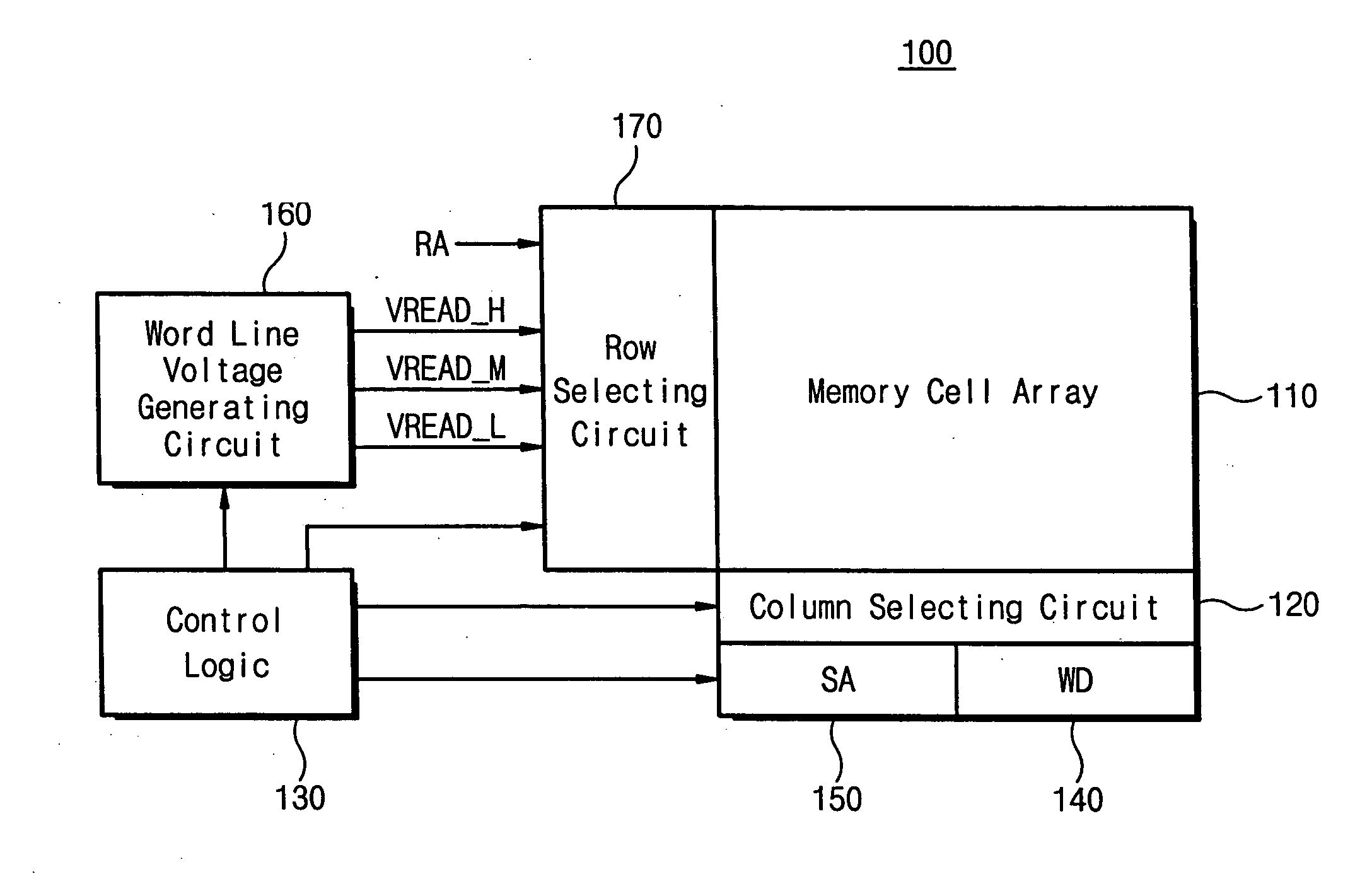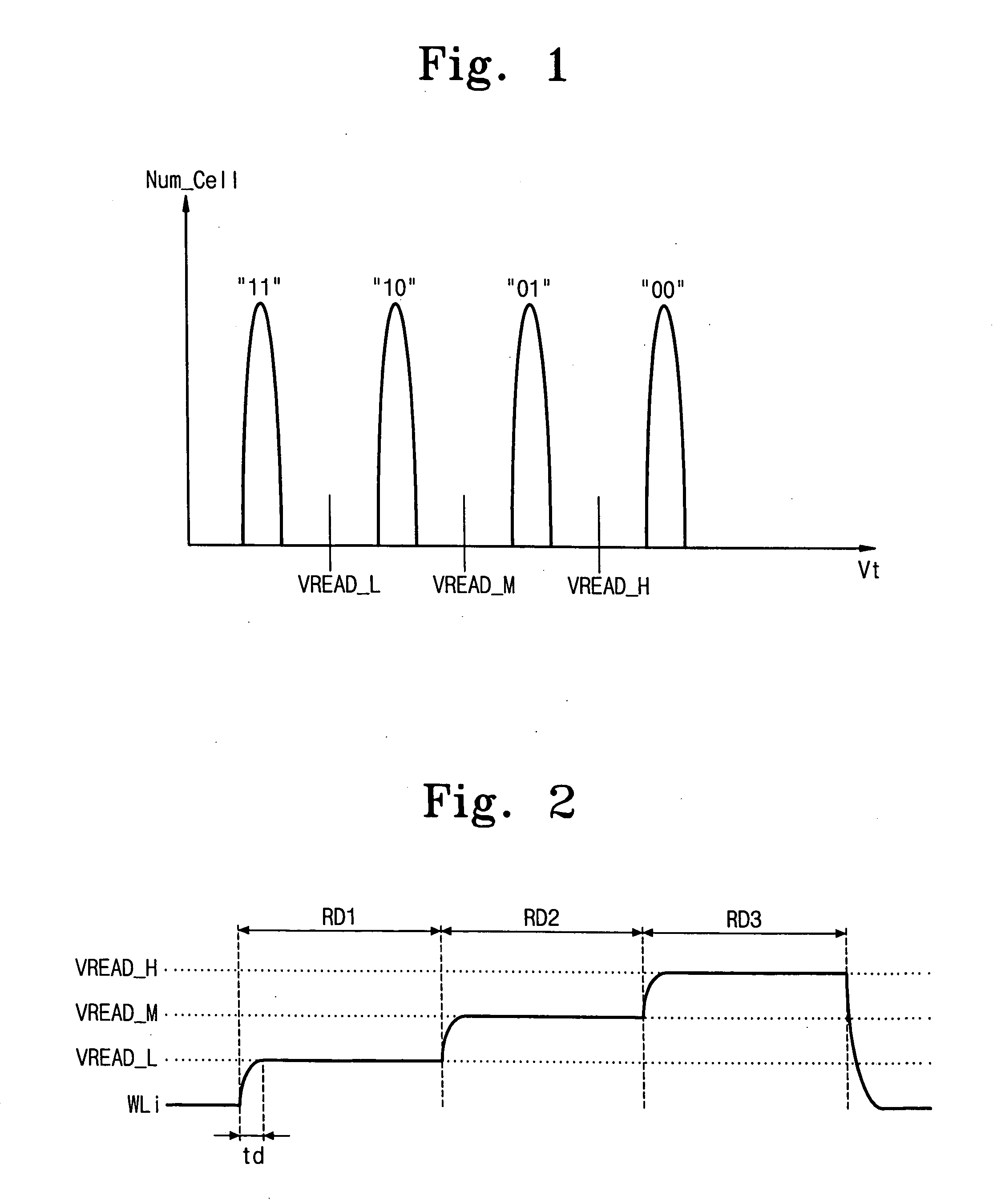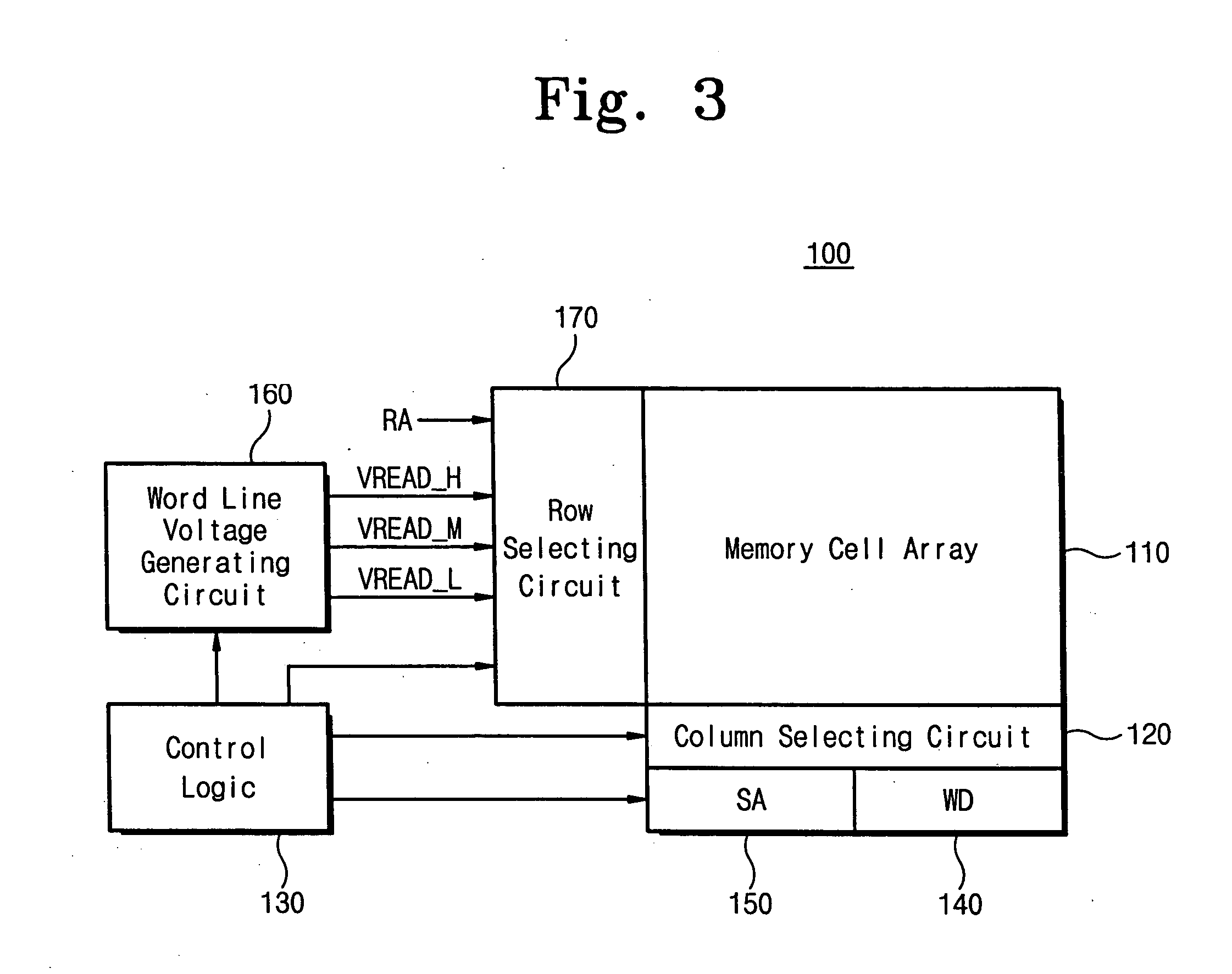Flash memory device with improved read speed
a flash memory and read speed technology, applied in static storage, digital storage, instruments, etc., can solve the problems of inability to erase one memory cell at a time, lack of endurance, wear and tear, etc., to improve read performance, improve read performance, and reduce development time
- Summary
- Abstract
- Description
- Claims
- Application Information
AI Technical Summary
Benefits of technology
Problems solved by technology
Method used
Image
Examples
Embodiment Construction
[0025] Exemplary embodiments of the invention are described below with reference to the corresponding drawings. These embodiments are presented as teaching examples. The actual scope of the invention is defined by the claims that follow.
[0026] In this written description, the term “read operation” is used to describe a process for reading multiple bits of information from a nonvolatile memory cell. For example, a read operation may be used to read 2-bit data from a memory cell during first, second and third read periods.
[0027]FIG. 3 is a block diagram of a flash memory device 100 according to one embodiment of the present invention. The flash memory device shown in FIG. 3 is preferably a NOR flash memory device. However, those skilled in the art will recognize that the memory device of FIG. 3 could be alternatively configured to use other types of nonvolatile memory such as masked read only memory (MROM), programmable read only memory (PROM), ferroelectric random access memory (FR...
PUM
 Login to View More
Login to View More Abstract
Description
Claims
Application Information
 Login to View More
Login to View More - R&D
- Intellectual Property
- Life Sciences
- Materials
- Tech Scout
- Unparalleled Data Quality
- Higher Quality Content
- 60% Fewer Hallucinations
Browse by: Latest US Patents, China's latest patents, Technical Efficacy Thesaurus, Application Domain, Technology Topic, Popular Technical Reports.
© 2025 PatSnap. All rights reserved.Legal|Privacy policy|Modern Slavery Act Transparency Statement|Sitemap|About US| Contact US: help@patsnap.com



